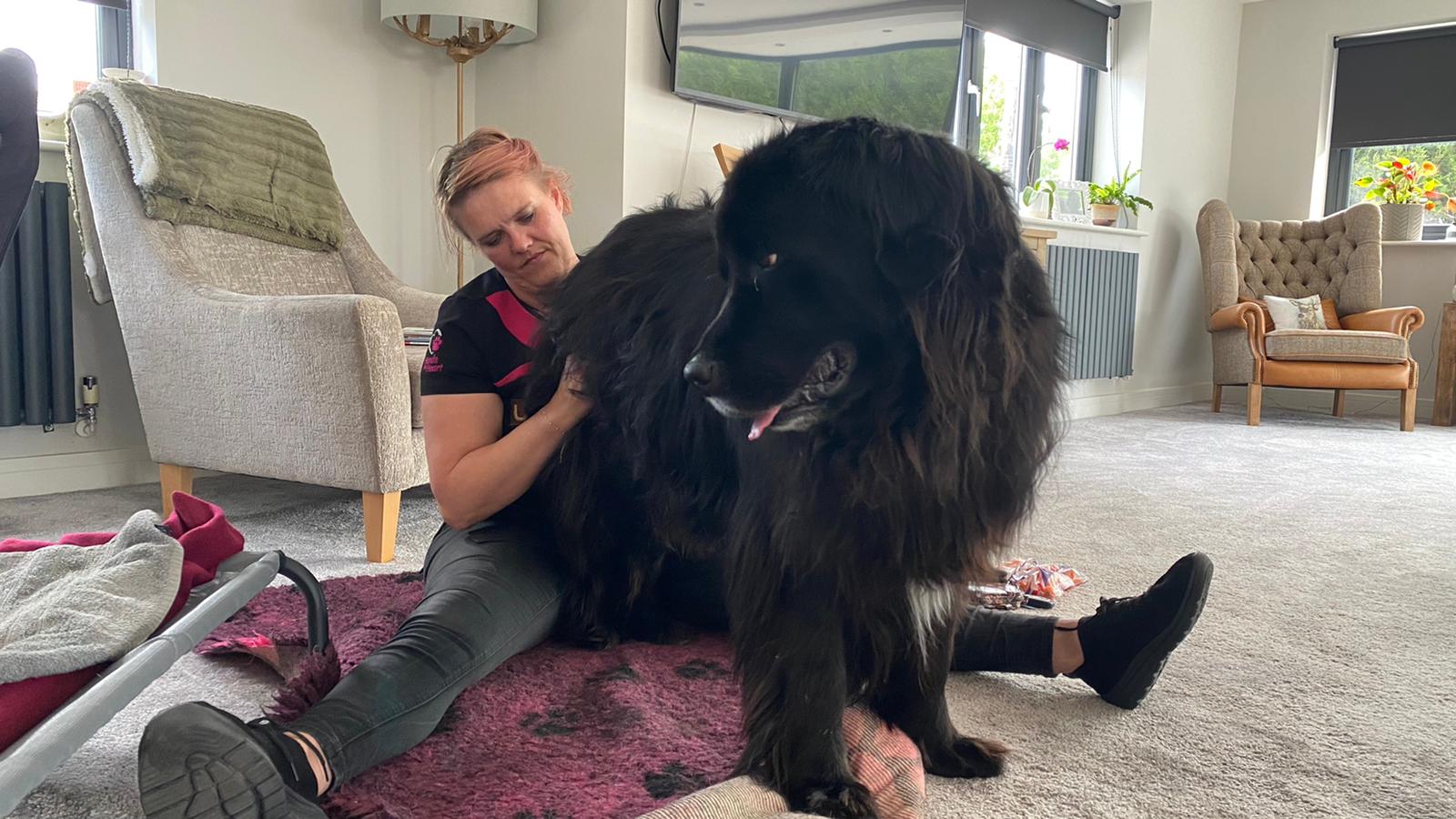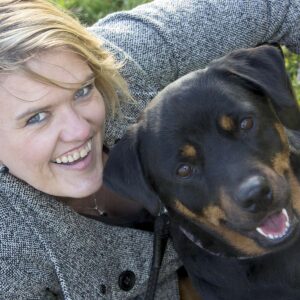We take our cars in for an MOT so why don’t we take our dogs (or ourselves) for a Muscular MOT to make sure they are “running efficiently”?
General health checks by our Vets mostly concentrate on the internal “medical” body i.e. heart, lungs, liver and kidney function but they rarely check Muscular Health… which make up 55% of the dog’s body mass!
And as muscular pain doesn’t show up on routine scans, the dog (and many owners I speak to as well) is often told they are making it up because there is nothing wrong. But for good measure, the pain is prescribed medication to solve the symptom and not the source which does very little to help. This is because NSAID’s (non-steroidal anti-inflammatories) don’t work on muscular pain or bound fascia (the connective tissue that surround the muscles and can stick together to make movement a lot harder!)
Therefore, as our dogs don’t know that pain isn’t “normal” and that they can seek help for it. They don’t complain about it and learn to live every day with the resulting aches and pains that have developed silently over time. Just as we do.
How can we help our dogs with their silent pain?
Things can be picked up by a professional that you may not necessarily pick up on yourself.
So don’t be afraid or embarrassed if you want to come to see me for an MOT because your Vet says nothing is wrong but you still think something is “off”.
Because my 2-year course was spent practicing moves on dogs and honing my palpation skills on the muscles and soft tissue of your dog; and over 6 years learning every day from my clients, I can sense certain issues in your dog’s muscles that may go unnoticed by other professionals.
Which is why I now offer my Muscular MOT’s at The Dog’s Diner. most Wednesday’s… You can book in here if you are already convinced.
If not, feel free to continue reading 😉
So what’s involved in a Muscular MOT on your Dog?
I have the use of a small room at The Dog’s Diner where the door can be shut if your dog is anxious or inclined to run off around the store! I have a vet bed on the floor because it’s just nicer than the bare floor and I find the comfort adds to their trust… along with treats obviously!
In an ideal situation, your dog would be stood upright so I can check the muscles in both sides in their normal state. However, as we know with some dogs, they don’t always do what we want them to so we have to go with the best of it xxx
So generally, a Muscular MOT is a nose to tail superficial check where we “palpate” (professionally examine through touch) different muscles to check the 4T’s:
- Temperature
- Tone
- Texture
- Tenderness
(Bear in mind that I am not a Vet, I cannot diagnose… but I can give you enough information to go to your vet with for them to make or rule out a diagnosis)
Temperature
When an area feels warm to my touch, it could be an increase in energy (I’m reiki trained too), or an increase in blood flow to that area, indicating some kind of muscular trauma, inflammation or irritation.
Conversely, when an area feels cold to my touch, it may indicate that there is not enough flow getting to this area, whether that’s energy flow or blood flow, possibly caused by past trauma or scar tissue being laid down in that area and impeding movement.
Tone
When a muscle doesn’t relax completely, it is said to be Hypertonic, which means too much resting tone. This means the muscle is constantly in the “on” position and can lead to unnecessary stiffness, fake fatigue and chronic (constant aching) pain.
Conversely, when a muscle is hypotonic, it means it’s not being used enough and, again, may be an indication of some kind of physiological or neurological blockage to that area. Of course, we are not Vets so we cannot diagnose but if we can identify a muscle that is not receiving the correct signals then massage has been known to help improve blood-flow to the area. This improves the workability of that muscle so it gets to play nicely with it’s surrounding muscles again.
Texture
If a muscular strain has occurred then scar tissue is laid across the muscle fibres to knit them back together again. The greater the strain, the more scar tissue is laid down. And if the strain hasn’t had chance to heal properly before your dog goes back out and the muscle re-strains then more scar tissue is laid down which prevents the muscles moving properly. This is why your dog may look like they are not fully healing from an injury (or surgery too).
A smaller strain can often go unnoticed because the body overcompensates. Especially if a younger dog still has zoomies and therefore accrues many small strains.
This is why most of the strains that we find during Muscular MOT’s are actually from years earlier.
It is this resulting scar tissue that we are looking for as trained massage therapists and although it cannot be removed with massage, it can be remodelled, which means some of that function can be returned to the muscle and make it flexible again.
Therefore, it can then play nicely with other muscles in its group again.
Tenderness
Obviously pain hurts.
Even Chronic Pain.
But as discussed earlier, our dogs are experts in hiding it… until I come along and test the individual muscles for hurty bits, which can result in pain-related behaviours such as shifting away, lip licking, distraction techniques (like licking you or their genital areas) and then obviously moving up to the yelping or even the “F off in no uncertain terms” responses… which is understandable… BECAUSE IT HURTS!
Thankfully, I have the skills to back off before we get to that stage… by using my unique way with them (I have been called the dog whisperer on many an occasion) and keeping eye contact throughout so your dog trusts me… and I have even been known to ask permission from them too which weirdly connects us further.
But finding a single muscle or area that hurts when they have been hiding it is so rewarding… and often affirming to you as the owner too… because your dog slowing down WASN’T in your imagination after all!
After the Muscular MOT
If we find any of the above, then we can chat about whether your dog would benefit from a massage session or even a course of sessions.
Massage can help by improving blood flow, lymph drainage, improving muscle and fascia flexibility and reducing the pressure placed on the pain receptors that contribute to nerve and muscle pain. All these small changes can contribute to big improvements after just 1-3 sessions
So do you want to book your Dog in for a Muscular MOT? Click here
Or if you have more questions or think you want to go straight ahead and book a massage for your dog (or yourself) then WhatsApp me on 07736041156 and based on your location, we can decide when would work for both our schedules.
I look forward to meeting you soon for your Dog’s Muscular MOT at The Dog’s Diner.




0 Comments